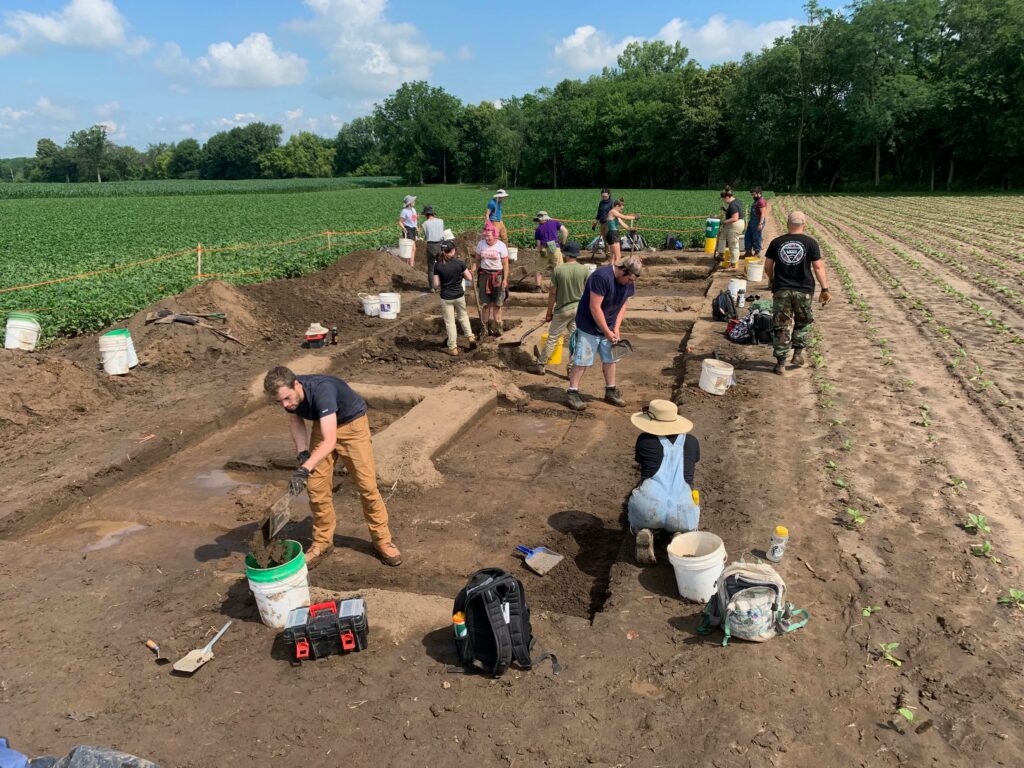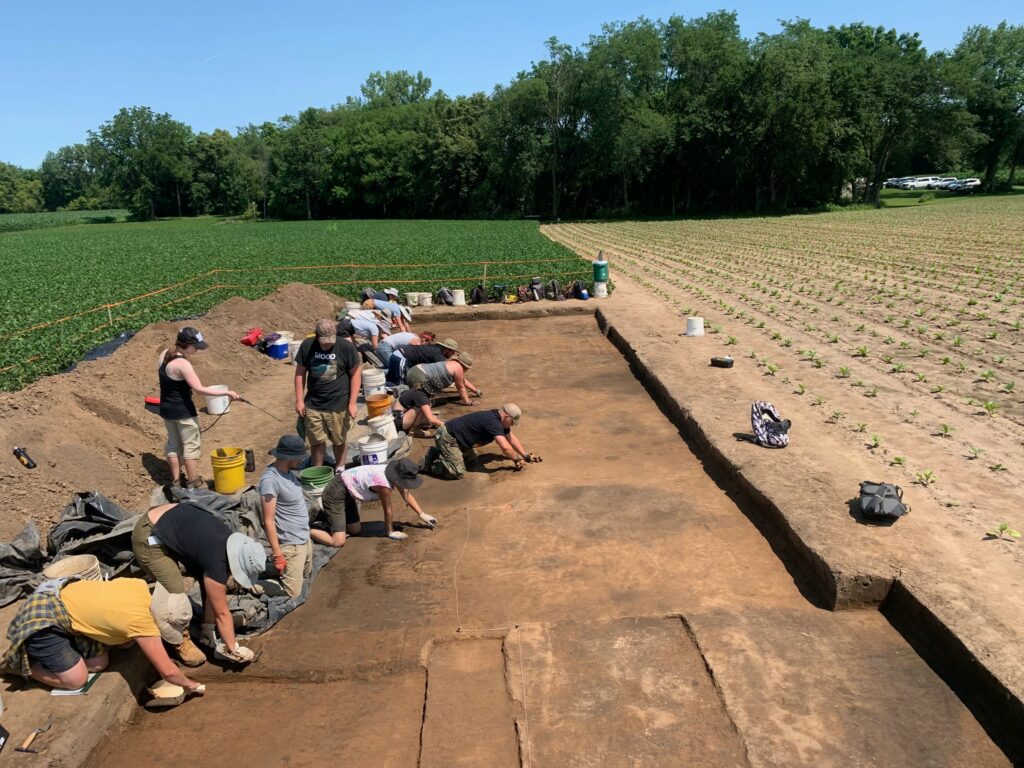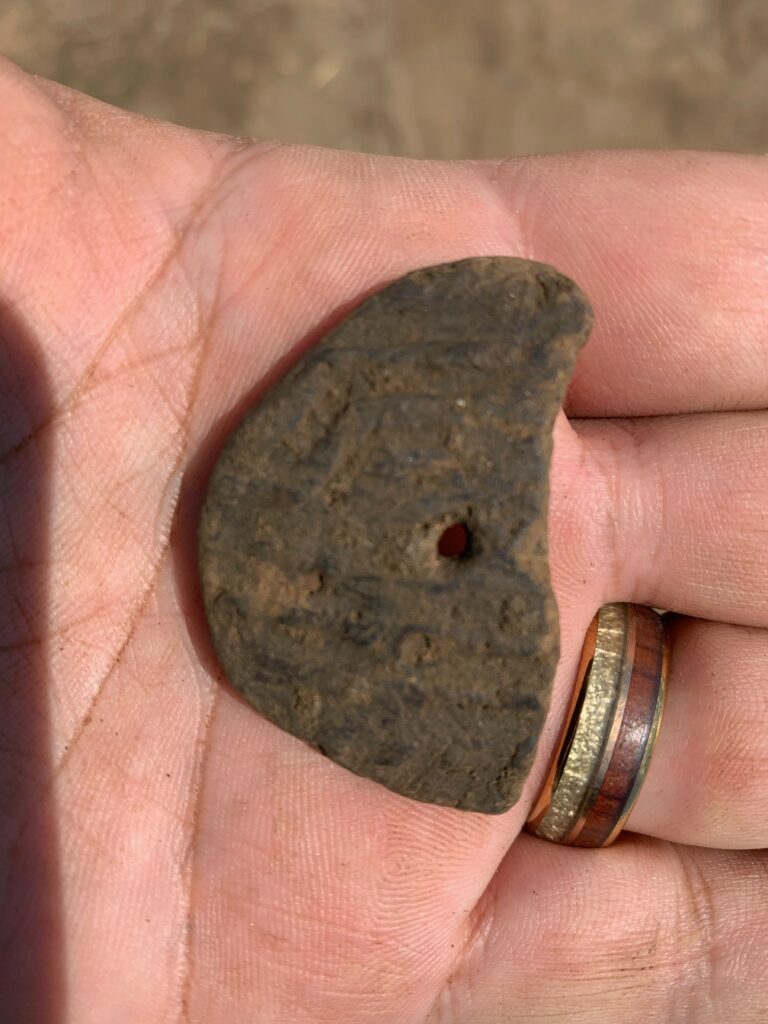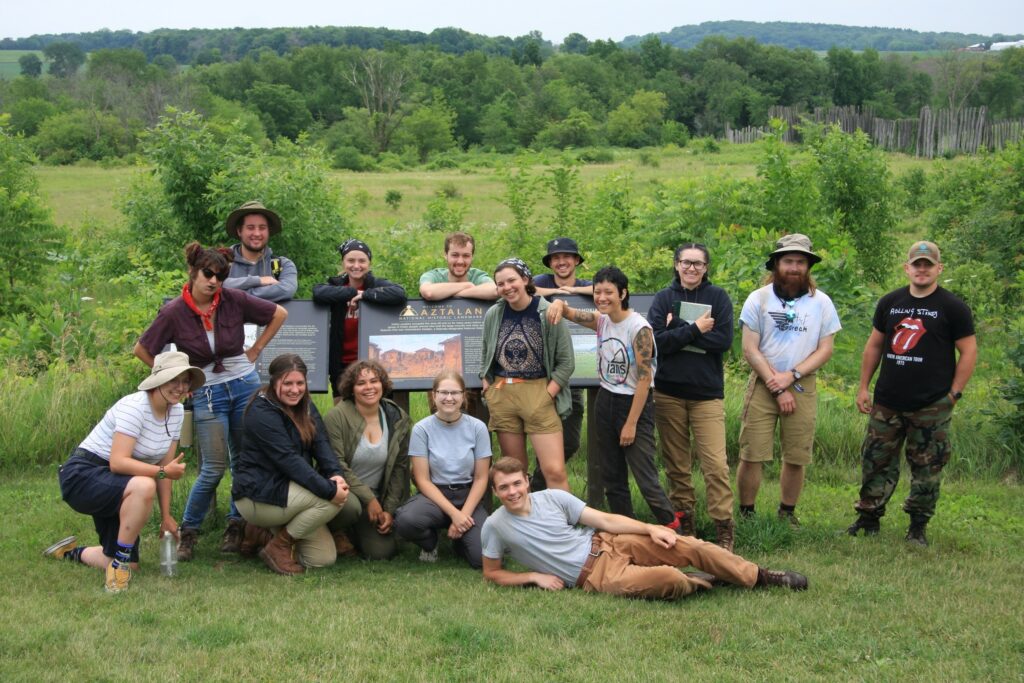Week Five of the 2021 UWM Archaeological Field School
During the fifth week the students in the archaeological field school opened up the 16 meters by 4.5 meters block. Unfortunately, a day and a half were lost because of rains at the beginning of the week so it took longer than anticipated. Field school student visited the site of Aztalan and the Hoard Museum in Fort Atkinson, WI when we could not excavate. Many more pit and post hole features are visible after the plowzone was removed. Large circular pit features and smaller circular post holes were identified. Post holes in a linear line indicate a structure in the excavation area. The last week of the field school will focus on excavating features.2

Figure 1. Field school students are working on excavating remaining sections of the 16 meters by 4.5 meters block through the plowzone to the B horizon to expose pit and post hole features at the Koshkonong Creek Village site.

Figure 2. Field school students working on cleaning the floor of the block to expose pit and post hole features. Pit features are the larger dark circular stains that were used for food storage and processing, and then used to dispose refuse. Smaller dark circular stains are where wooden posts were put in the ground, most likely for habitation structures.

Figure 3. A broken pottery sherd has been modified into a spindle whorl. The sherd has been rounded and smoothed along the edges, then perforated in the middle. Spindle whorls were used to twist plant fibers into thread for netting and clothing.

Figure 4. Field school student group photo at Aztalan State Park in Jefferson County, Wisconsin.